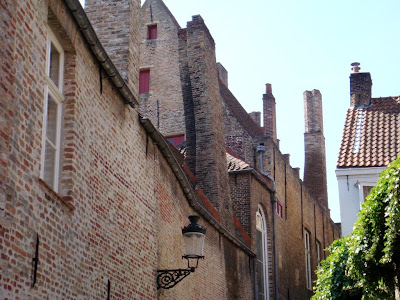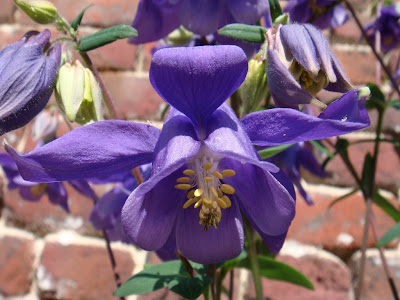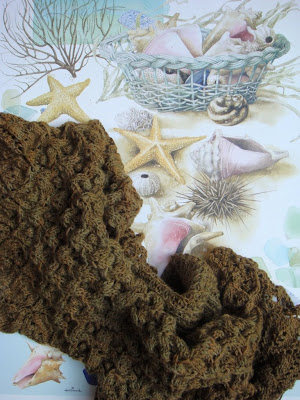On May 6th I spent a sunny day in Bruges. In the morning I went to pay a visit at 't Apostelientje in the Balstraat, because I wanted some linen yarn to make this crocheted shawl with collar:

Het garen lag al naar mij te lonken in de etalage. Het betreft artisanaal linnen garen uit West-Vlaanderen:
The yarn was laying in the window on a piece of old lace. It is 100% linen yarn from Occidental Flanders:

De wijk rondom de kerk van Sint-Anna in Brugge heeft een quasi-landelijke sfeer:
The neighbourhood of Sint-Anna in Bruges has something of a village:



Enkele bijzondere schoorstenen trokken mijn aandacht, hier in de Philip Stockstraat en de Kandelaarstraat:
My attention was drawn towards some special chimneys:


Bij Scharlaeken kocht ik enkele strengetjes borduurgaren in oogstrelende kleurencombinaties:
At Scharlaeken I bought some embroidery yarn in attractive colour combinations:

In de etalage van Chine een hoogst retro modelletje ontdekt in kunstbreiwerk:
In the window of the Chine store I discovered a vintage style tunic in lace knitting:

Verderop waren grappige speelgoedbeesten in machinebreiwerk te koop:
Further on some funny machine knitted animal toys:

Na een heerlijke Thaise lunch in Narai Thai (zelden zo'n malse tonijn gegeten), een bezoekje gebracht aan het Brugse breiclubje Naaldzang. De namiddag was zó om. Red(head)Samur(ai) was in het rond aan het breien in Katia Azteca Kleur 7802 en hield daarbij de naalden vast in een 8vorm, moet ik ook eens proberen:
After a delicious lunch at Narai Thai (seldom tasted such tender tuna), a visit to the local knitting group Naaldzang. The afternoon passed away like nothing. RedSamur was knitting in the round with Katia Azteca Kleur 7802 and held the circular needle in the position of a figure 8, must try this myself:

Ameria was een muts aan het breien in garen van Caron, een Amerikaans wolmerk dat we in Europa niet gauw tegenkomen:
Ameria was knitting a cap in yarn from Caron, an American brand that we don't see often in Europe:

Als afsluiter van de dag een heerlijke ijskoffie in de Gelateria da Vinci. De zomer mag nú beginnen:
To finish the day a gorgeous ice coffee from Gelateria da Vinci. Is it Summer yet?



























